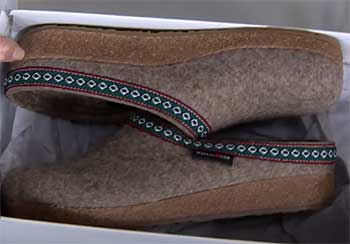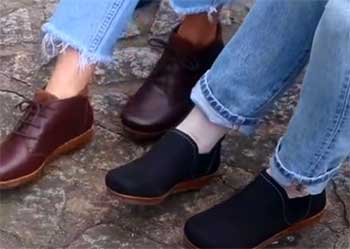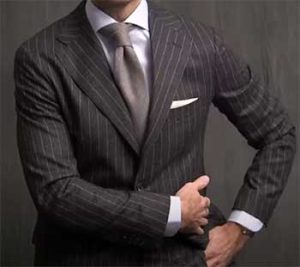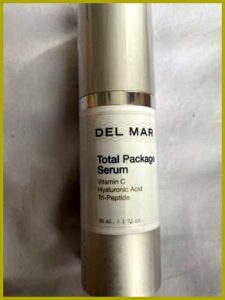Wool clogs have become a popular footwear choice in recent years for their comfort and durability. Two of the top brands of wool clogs are Stegmann and Haflinger. But with both brands offering similar looking clogs, how do you decide which is better for your needs?
In this comprehensive guide, we compare Stegmann and Haflinger wool clogs to help you determine the key differences and which best fits your lifestyle. We analyze the construction, materials, comfort factors, styles, care and more to provide an in-depth look at the pros and cons of each clog.
A Brief Comparison Table
| Feature | Stegmann | Haflinger |
| Construction | Handmade in Europe | Machine made in Europe |
| Materials | 100% boiled wool upper<br>Anatomically shaped cork and latex sole | Boiled wool upper<br>Latex and cork sole |
| Comfort Features | Soft cushioned insole<br>Anatomically shaped sole supports arches | Contoured suede footbed |
| Style Selection | Closed back clogs and slides | Closed back clogs, slides and sandals |
| Care | Spot clean with wool detergent | Spot clean with wool detergent |
| Price | $139+ | $79+ |
As you can see from the table, while Stegmann and Haflinger clogs share similarities in their materials and care, there are some notable differences when it comes to their construction, comfort technologies and style selection. Read on as we explore these key differences in greater depth.
Construction and Materials Comparsion

One of the biggest differences between Stegmann and Haflinger clogs lies in how they are constructed.
Stegmann clogs are handcrafted in Europe from start to finish using traditional cobbler methods. This hands-on approach allows for greater attention to detail and quality control. The uppers consist of single pieces of 100% boiled wool that contour perfectly to the foot without seams that can irritate.
Haflinger clogs are machine made, also in Europe, which enables higher volume production but at the cost of relying on automation versus skilled craftsmanship. The uppers are assembled from multiple sections of boiled wool.
Both brands use latex and cork to form the sole, making them lightweight yet supportive. Natural latex conforms to the shape of your foot over time. The layered cork provides cushioning and shock absorption.
When it comes to materials, both Stegmann and Haflinger use high quality boiled wool uppers sourced from European sheep. Boiling the wool makes the fibers tighten up for enhanced durability and shape retention. The wool also enables air circulation, wicks moisture and maintains a comfortable temperature in all seasons.
So in summary:
- Stegmann uses handcrafted construction for better quality control with single piece uppers while Haflinger relies on high volume machine production with multi-section uppers.
- Both brands use durable boiled wool uppers and latex/cork soles.
Comparison of Comfort Features
Proper arch support and cushioning are essential for all-day wear comfort with wool clogs. This is another area where Stegmann and Haflinger differ.

The Stegmann anatomically shaped sole is designed to provide exceptional arch support.
It cradles the contours of your feet, encouraging better posture and redistributing weight evenly across your feet.
This helps reduce pressure on the ball and heels for enhanced comfort.
Haflinger uses a standard contoured footbed aimed at average feet.
So you may not get the same personalized arch support. However, the suede covering on the footbed allows for shock absorption.
For cushioning, Stegmann clogs feature a soft padded insole over the latex and cork base. This increases long-wearing ease. In contrast, Haflinger does not include an extra insole, relying solely on the slight padding from the cork layer.
In summary of comfort features:
- Stegmann offers superior arch support from its anatomically shaped sole and extra cushioning from a padded insole while Haflinger has standard contouring and shock absorption only from the suede footbed.
Also Read: Differences Between NAOT And Birkenstock Clogs.
Style Selection Comparison
Wool clogs have expanded beyond basic styles to craftier silhouettes from slides to sandals. This versatility makes wool clogs suitable for not just indoor lounging but also outdoor wear.
Both brands offer the classic completely closed back clog style for maximum foot coverage and warmth. However, Stegmann has a very limited selection with just the one style. You can choose from a handful of mostly neutral colors.
Haflinger, on the other hand, provides much more variety. Along with the enclosed clog, they sell open back slide styles with heel straps as well as open toe sandal clogs. You’ll also find more exciting colors and patterns like stripes and plaids. There are options suitable for men, women and children.
So in terms of style versatility:
- Stegmann only sells one classic fully enclosed clog style in limited colors
- Haflinger offers enclosed clogs, back strap slides and open toe sandal clogs in expanded colors and prints
Care Differentiation

Caring for wool clogs is relatively easy thanks to the natural stain resistance and machine washability of wool.
Both Stegmann and Haflinger clogs can be spot cleaned as needed with a wool detergent.
It is best to air dry.
The latex sole can start to break down when machine washed and dried frequently.
So for deeper cleaning, hand wash gently and reshape the wool upper while drying.
Proper storage helps wool clogs maintain their shape and wicks away moisture. Make sure to give them space to air out between wears and stuff with newspaper or shoe trees when not being worn.
So for care:
- Both brands can be spot treated with wool detergent
- Hand wash gently for deeper cleaning
- Allow to fully air dry to prevent latex breakdown
- Use shoe trees or newspaper when storing to maintain shape
Also Read: Differences Between Dansko And Birkenstock Clogs.
Cost Comparison
With their handcrafted construction and specialized comfort technologies, Stegmann clogs do come at a price premium versus the machine made Haflinger clogs.
On average, a standard pair of Stegmann clogs will cost $139 or higher. More embellished styles with fur lining or embroidered patterns reach above $300.
Haflinger clogs are typically priced between $79 and $120 depending on the model. Their open toe sandal clogs retail for around $80 while sheepskin lined boots cost up to $175.
Here is a breakdown of pricing:
- Stegmann – Starts at $139 and goes over $300
- Haflinger – Ranges from $79 to $175
The price difference comes down to the higher labor costs associated with Stegmann’s handcrafted production and use of premium materials compared to Haflinger’s machine automation and man-made materials.
You’ll enjoy a 30-60% price savings with Haflinger but sacrifice some quality control and customization. Whereas the investment in Stegmann buys specially fitted comfort with top notch craftsmanship.
Which Is Better For You? Key Considerations
Now that we’ve compared the nitty gritty details between Stegmann and Haflinger wool clogs, let’s boil it down to the main factors to consider when deciding which brand best matches your needs and preferences.
Stegmann Is Best If You Want:
- Top quality handcrafted artisanship
- Superior arch support
- Plush comfort even for sensitive feet
- long term durability
- Classic styles
Choose Haflinger For:

- Budget friendly price points
- Fun colors and patterns
- Open back slides or sandals
- Machine washable convenience
- Just average arch needs
Same Great Benefits from Both Brands:
- Breathable, temperature regulating wool
- Contoured latex and cork sole
- Machine or hand washability
- European craftsmanship
Also Read: Comparison of Glerups And Giesswein Slippers.
Frequently Asked Questions (FAQ)
Yes, the handcrafted construction and anatomically shaped soles provide exceptional arch support that evenly redistributes weight to reduce pressure on the balls and heels of your feet. The materials like boiled wool and latex conform perfectly over time. These features make Stegmann an excellent choice even if you have sensitive or high arched feet.
With their meticulous handmade craftsmanship from high grade materials, Stegmann clogs can easily last 5-10 years or longer when properly cared for. The boiled wool uppers retain their shape exceptionally well. Avoiding machine drying preserves the latex sole. Proper storage between wears keeps moisture away allowing for a long lifespan.
Haflinger and Birkenstock are two high quality German footwear brands but they excel in different areas. Birkenstock sandals are iconic for their contoured cork footbed that molds perfectly to your feet. Haflinger is known for wool clogs and slippers. Both use latex for added softness but Birkenstock tends to be preferred for arch support while Haflinger offers more casual styling.
Stegmann wool clogs are handmade in small family-run workshops across Europe. Each workshop specializes in particular styles but all use traditional cobbling techniques passed down through generations. This European craftsmanship ensures the highest quality materials and construction.
Final Thoughts
In the world of wool clogs, Stegmann and Haflinger both offer quality footwear thanks to premium materials like boiled wool and latex soles.
But upon closer inspection, notable differences come to light when examining their construction methods, customized comfort technologies, style selections, pricing and intended longevity.
While the higher cost Stegmann clogs reflect unmatched artisanship and arch support, the budget friendly Haflinger brand allows you to follow trends with more fashion forward styles.
Ultimately, deciding between the two comes down to which features hold top priority for your needs and lifestyle. From supreme personalization to affordable variety, wool clogs have something special to offer every foot.



